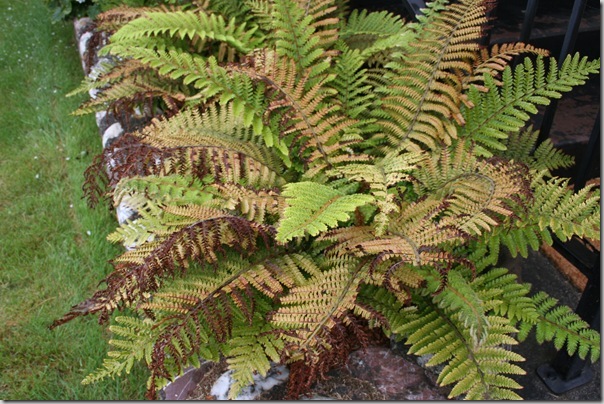
Ferns are cherished for their lush green foliage and ability to thrive in indoor environments, adding a touch of elegance and tranquility to any space. However, brown leaves on ferns can be a cause for concern among plant enthusiasts, signaling potential issues with environmental conditions, watering practices, soil health, or pest infestations. In this article, we’ll delve into the various factors that may contribute to the browning of fern leaves and how to address them effectively.
**I. Introduction**
**A. The Allure of Ferns in Indoor Spaces**
Ferns are prized for their delicate fronds and graceful appearance, making them popular choices for indoor decor and landscaping. Their lush green foliage brings a sense of freshness and vitality to indoor spaces, creating a soothing and inviting atmosphere.
**B. Concerns Over Brown Leaves**
While ferns are generally low-maintenance plants, the browning of leaves can be distressing for plant owners. Brown leaves detract from the fern’s aesthetic appeal and may indicate underlying issues affecting the plant’s health and vitality.
**C. Factors Contributing to Browning Fern Leaves**
Several factors can contribute to the browning of fern leaves, including environmental conditions, watering practices, soil health, and pest infestations. Identifying the underlying cause is crucial for effectively addressing the issue and restoring the fern to optimal health.
**II. Environmental Factors**
**A. Lighting Conditions**
Insufficient or excessive light exposure can cause fern leaves to turn brown. While ferns prefer indirect sunlight, exposure to direct sunlight can scorch their delicate foliage, leading to browning and leaf damage.
**B. Humidity Levels**
Ferns thrive in humid environments, and low humidity levels can cause their leaves to dry out and turn brown. Indoor heating and air conditioning systems can decrease humidity levels, especially during the winter months, leading to moisture stress in ferns.
**C. Temperature Extremes**
Extreme temperatures, both hot and cold, can adversely affect ferns and result in browning of leaves. Sudden temperature fluctuations or exposure to drafts can shock the plant and cause damage to its foliage.
**III. Watering Practices**
**A. Overwatering**
Overwatering is a common cause of browning fern leaves, as it can lead to root rot and fungal infections. Ferns prefer moist but well-draining soil, and waterlogged conditions can suffocate the roots and impede nutrient uptake.
**B. Underwatering**
Conversely, underwatering can also cause fern leaves to turn brown. Insufficient watering deprives the plant of essential moisture, causing dehydration and leaf wilting. It is essential to maintain a consistent watering schedule and ensure that the soil is evenly moist.
**C. Water Quality Issues**
Poor water quality, such as chlorinated or hard water, can harm ferns and result in leaf browning. Chemicals present in tap water can accumulate in the soil over time, leading to nutrient imbalances and foliage discoloration.
**IV. Soil Conditions**
**A. Soil Composition**
The type and quality of soil can impact the health and vitality of ferns. Ferns prefer well-aerated, organic-rich soil with good drainage to prevent waterlogging and root rot. Compacted or nutrient-poor soil can inhibit root growth and lead to browning of leaves.
**B. Potting Mix Drainage**
Improper potting mix or container drainage can exacerbate water retention issues and contribute to the browning of fern leaves. Choosing a well-draining potting mix and ensuring adequate drainage holes in the container are essential for maintaining optimal soil moisture levels.
**C. Nutrient Deficiencies**
Nutrient deficiencies, particularly in essential macronutrients such as nitrogen, potassium, and magnesium, can manifest as leaf browning in ferns. Regular fertilization with a balanced fertilizer formulated for ferns can help replenish nutrients and promote healthy foliage growth.
**V. Pest and Disease Infestations**
**A. Common Pests Affecting Ferns**
Pest infestations, such as spider mites, mealybugs, and scale insects, can damage fern foliage and cause it to turn brown. Regular inspection and proactive pest management measures are crucial for preventing infestations and preserving fern health.
**B. Fungal Infections**
Fungal infections, such as leaf spot and root rot, can cause browning and discoloration of fern leaves. Proper sanitation practices, adequate air circulation, and avoiding overwatering can help prevent fungal diseases and maintain plant health.
**C. Viral Diseases**
Although less common, viral diseases can also affect ferns and result in leaf browning and distortion. Viral infections are often incurable and may require the removal of affected foliage to prevent the spread of the disease to healthy plants.
In conclusion, the browning of fern leaves can be attributed to various factors, including environmental conditions, watering practices, soil health, and pest infestations. By identifying the underlying cause and implementing appropriate corrective measures, plant owners can restore their ferns to optimal health and preserve their lush green foliage. Regular monitoring, proper care, and attention to detail are essential for maintaining the vibrancy and beauty of ferns in indoor spaces.
